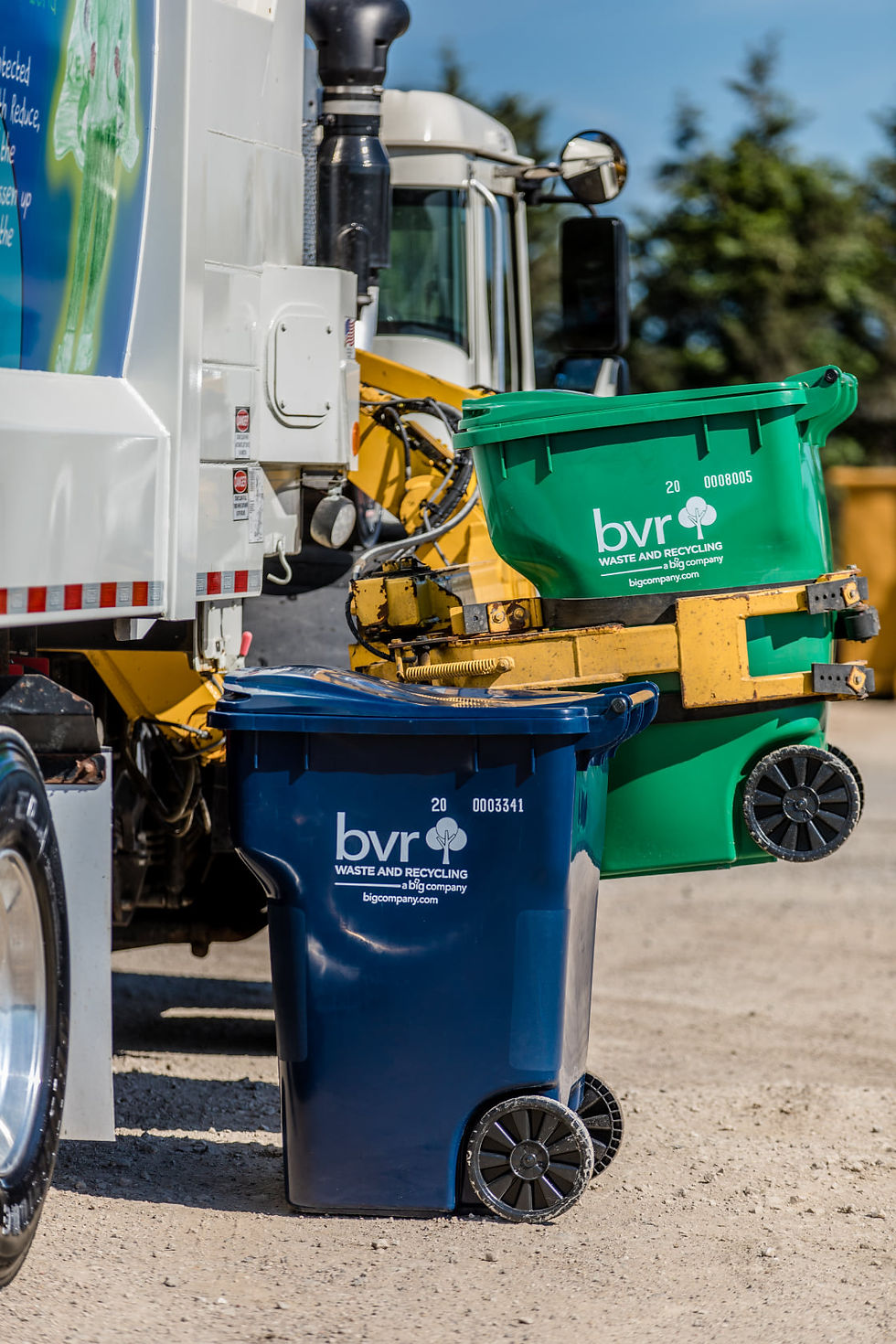Essential Guidelines for Proper Waste Disposal
- cswanson79
- Sep 5
- 3 min read
Proper waste disposal is a critical aspect of maintaining a clean and healthy environment. It involves managing waste materials in a way that minimizes their impact on the environment and human health. Understanding how to dispose of waste correctly can prevent pollution, conserve resources, and promote sustainability. This article provides practical advice and detailed information on how to handle waste responsibly.
Understanding Proper Waste Disposal
Proper waste disposal means discarding waste in a manner that is safe, efficient, and environmentally friendly. It involves sorting waste into categories such as recyclables, compostables, and landfill waste. Each type of waste requires a different disposal method to reduce harm to the environment.
For example, recyclable materials like paper, glass, and certain plastics should be cleaned and placed in designated recycling bins. Organic waste such as food scraps and yard waste can be composted to create nutrient-rich soil. Hazardous waste, including batteries and chemicals, must be taken to special disposal facilities to prevent contamination.
By following these steps, individuals and communities can reduce landfill use and promote recycling and composting efforts. This approach not only conserves natural resources but also reduces greenhouse gas emissions.

Key Practices for Proper Waste Disposal
To ensure waste is disposed of properly, it is important to follow some key practices:
Segregate Waste at Source: Separate waste into categories such as recyclables, organic waste, and hazardous materials right where it is generated. This makes recycling and disposal more efficient.
Use Designated Containers: Place waste in the correct bins or containers. Many communities provide color-coded bins for different types of waste.
Avoid Contamination: Clean recyclables before disposal to avoid contamination that can make recycling impossible.
Dispose of Hazardous Waste Safely: Items like batteries, paint, and electronics should never be thrown in regular trash. Use local hazardous waste collection programs.
Reduce Waste Generation: Minimize waste by choosing reusable products, buying in bulk, and avoiding single-use plastics.
Following these steps helps maintain cleanliness and supports environmental conservation efforts. For more detailed information, you can refer to waste disposal guidelines.
What are the 5 Principles of Waste Disposal?
The five principles of waste disposal provide a framework for managing waste effectively:
Reduce: Minimize the amount of waste generated by choosing products with less packaging and avoiding disposable items.
Reuse: Find ways to reuse items instead of discarding them. For example, use glass jars for storage or donate old clothes.
Recycle: Process waste materials to create new products. Recycling conserves resources and reduces landfill use.
Recover: Extract energy or materials from waste through processes like composting or waste-to-energy conversion.
Dispose: Safely discard waste that cannot be reduced, reused, recycled, or recovered. This should be done in compliance with environmental regulations.
Applying these principles helps reduce the environmental footprint of waste and promotes sustainable living.
Common Mistakes to Avoid in Waste Disposal
Many people unintentionally make mistakes that hinder proper waste disposal. Avoiding these errors can improve waste management outcomes:
Mixing Recyclables with Trash: Placing recyclables in the trash bin contaminates the waste stream and reduces recycling efficiency.
Throwing Hazardous Waste in Regular Trash: This can cause environmental pollution and health risks.
Ignoring Local Regulations: Different areas have specific rules for waste disposal. Always follow local guidelines.
Overfilling Bins: Overfilled bins can lead to littering and attract pests.
Not Cleaning Recyclables: Dirty recyclables can spoil entire batches of recyclable materials.
Being mindful of these common pitfalls ensures waste is handled correctly and supports community efforts to manage waste sustainably.
How to Implement Proper Waste Disposal at Home and Work
Implementing proper waste disposal practices at home and work is straightforward with a few simple steps:
Set Up Separate Bins: Have clearly labeled bins for recyclables, compost, and trash.
Educate Everyone: Make sure family members or employees understand what goes in each bin.
Regularly Empty Bins: Prevent overflow by emptying bins frequently.
Use Local Services: Take advantage of community recycling programs and hazardous waste collection days.
Encourage Waste Reduction: Promote habits like using reusable bags, containers, and water bottles.
By creating a culture of responsible waste disposal, homes and workplaces can significantly reduce their environmental impact.
Moving Towards a Cleaner Future
Proper waste disposal is essential for protecting the environment and public health. By understanding the principles and practices of waste management, everyone can contribute to a cleaner, safer world. Small changes in how waste is handled can lead to big improvements in sustainability.
Adopting proper waste disposal habits not only benefits the planet but also enhances community well-being. It is a shared responsibility that requires awareness, effort, and commitment.
For more insights and tips, explore the BVR Waste and Recycling resources to stay informed and proactive in managing waste effectively.



Comments